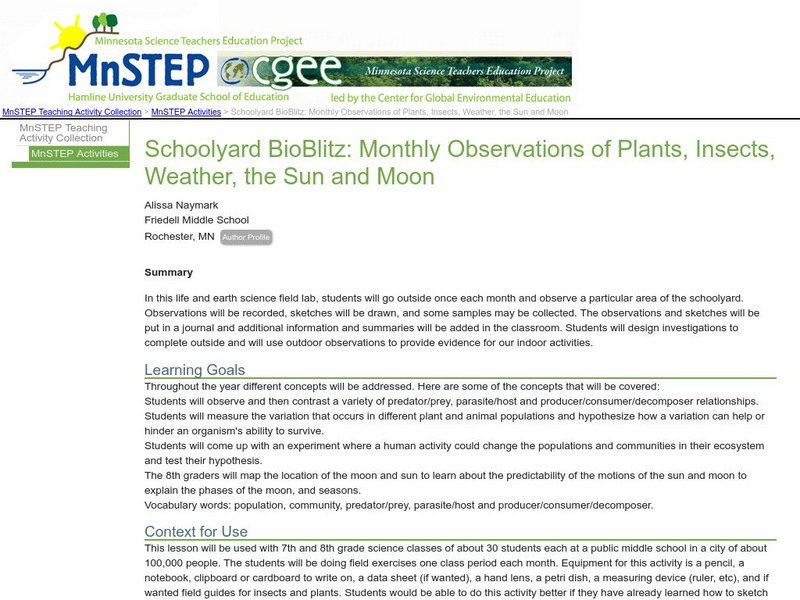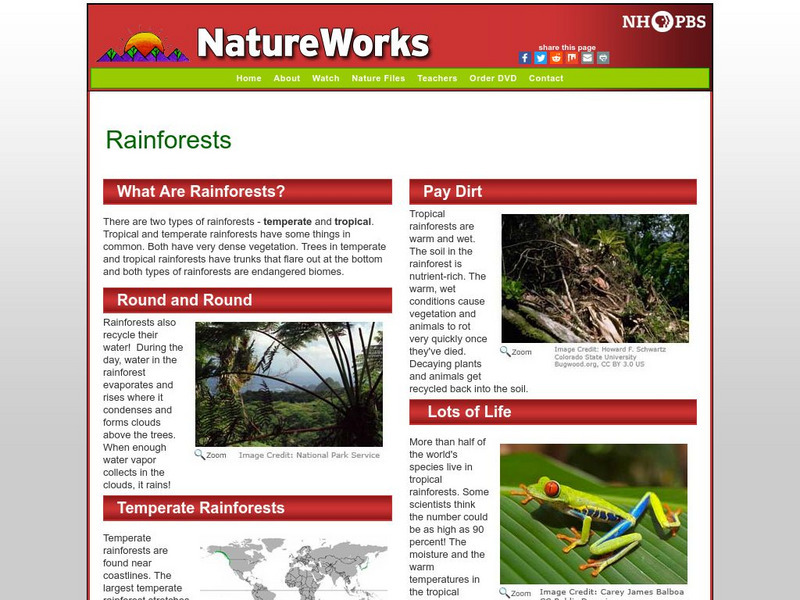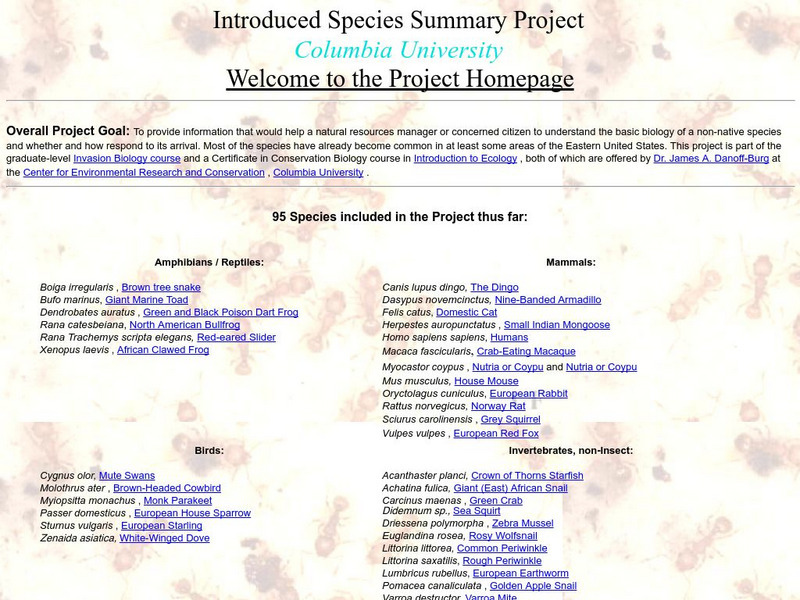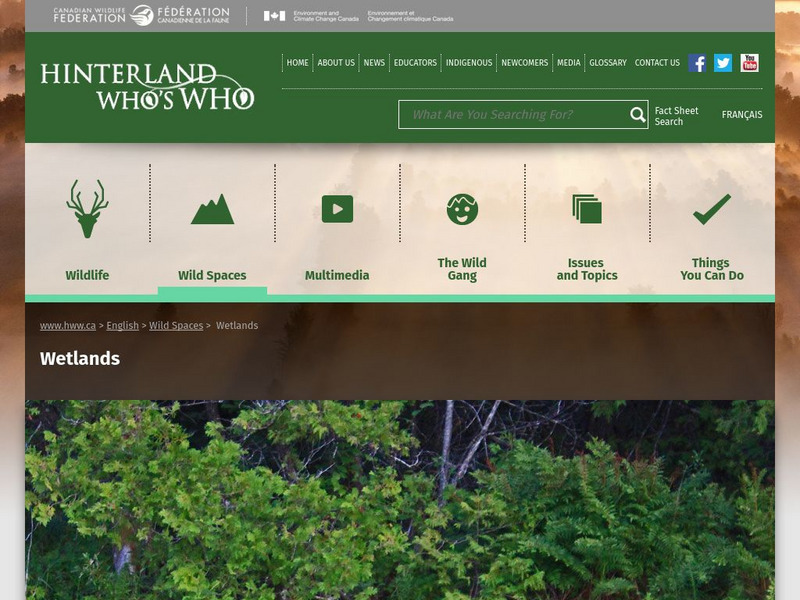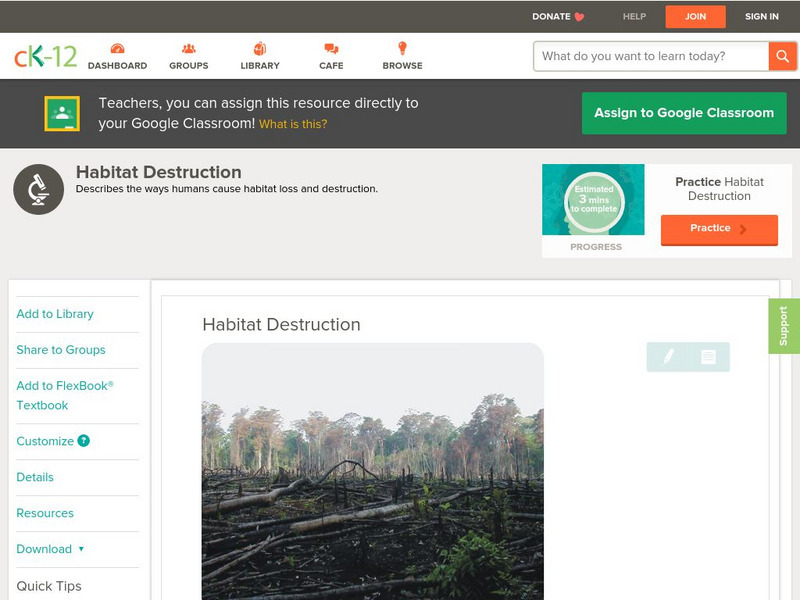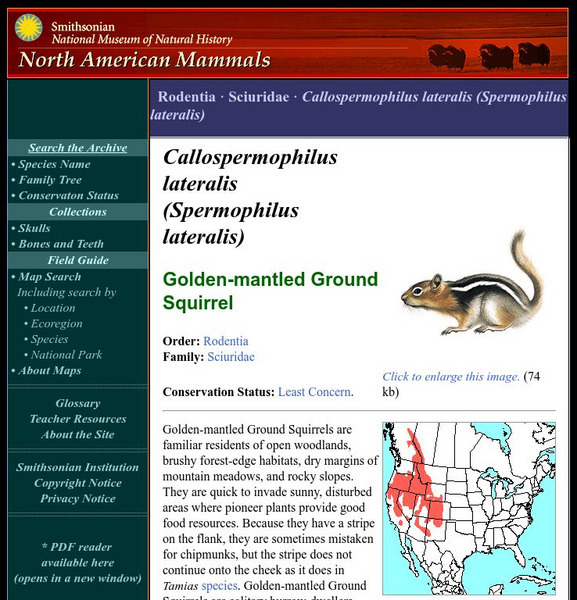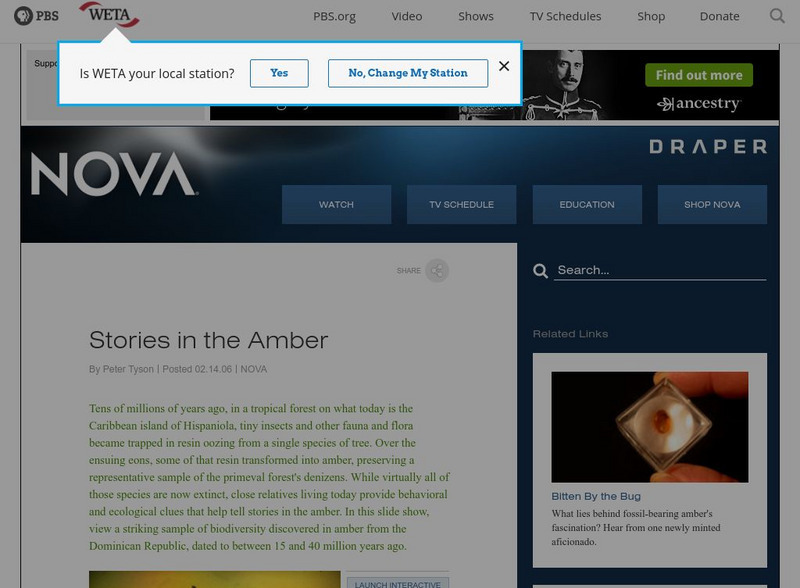Hi, what do you want to do?
PBS
Pbs Learning Media: Just for You
Students are asked to explain how plants and animals may be classified as natural resources.
Science Education Resource Center at Carleton College
Serc: Mn Step: Schoolyard Bio Blitz
For this activity, students visit a small section of the schoolyard and record observations in a scientific journal. They will observe different things as the school year progresses, including ecological relationships, human impact on...
Other
Western North Carolina Vitality Index: Ecosystem Threats
The forests of Western North Carolina are threatened by a wide variety of environmental stressors and disturbances, such as insects, disease, invasive species, drought, fire, hurricanes, tornadoes, and ice storms. A stressor is any kind...
Discovery Education
Discovery Education: Evolution
Discovery School provides a lesson plan on evolution by having students make a timeline of the history of evolution. This timeline will have dates and, above or below the dates, will provide details about the people who have played major...
PBS
Nh Pbs: Nature Works: Ecosystems
How would you define an ecosystem? Check out this educational resource to learn more about the living and nonliving parts of different ecosystems.
Other
Hilton Pond Center
This Hilton Pond Center site is a resource for teachers, students and researchers who are interested in the environment and environmental conservation of animals and plants.
PBS
Nh Pbs: Nature Works: Rainforests
This resource offers a clear and concise picture of the rainforest biome. The content includes a look at the two different types of rainforests found in the world, animals that live in the rainforests, plants that grown in the rainforest...
Globio
Glossopedia: Borneo
Borneo is the third largest island in the world. Borneo's vast biodiversity, natural resources, and geology are discussed. The history of indigenous peoples as well as the effects of colonization and overuse of natural resources are...
Columbia University
Columbia University: Introduced Species Summary Project
The purpose of this website is to provide information that would help a natural resources manager or concerned citizen to understand the basic biology of a non-native species and whether and how to respond to its arrival. Most of the...
Canadian Wildlife Federation
Hinterland Who's Who: Wetlands
Learn about Canada?s wetlands, what they are and where they are located. Wetlands are divided into two classes: freshwater and saltwater. They are further separated into four main types: ponds, marshes, swamps, and peatbogs. Discover the...
NOAA
Noaa: Estuaries 101 Curriculum: Survival in an Estuary
This activity introduces students to the nature of estuaries, estuarine environmental factors, and four important abiotic factors-pH, temperature, dissolved oxygen, and salinity-and how they vary in estuaries. A PowerPoint presentation,...
Other
Teaching Ideas for Primary Teachers: Science Ideas
A great resource to discover fun new activities to use in your classroom. Activities are age-appropriate, and span several science topics.
CK-12 Foundation
Ck 12: Life Science: Habitat Destruction
[Free Registration/Login may be required to access all resource tools.] From a human point of view, a habitat is where you live, go to school, and go to have fun. Your habitat can be altered, and you can easily adapt. Most people live in...
Smithsonian Institution
National Museum of Natural History: American Mammals: Golden Mantled Ground Squirrel
Golden-mantled Ground Squirrels are familiar residents of open woodlands, brushy forest-edge habitats, dry margins of mountain meadows, and rocky slopes. They are quick to invade sunny, disturbed areas where pioneer plants provide good...
CK-12 Foundation
Ck 12: Life Science: Cloning
[Free Registration/Login may be required to access all resource tools.] Cloning is the process of creating an exact replica of an organism. The clone's DNA is exactly the same as the parent's DNA. Bacteria and plants have long been able...
PBS
Nova: Stories in Amber
Like a time machine, amber fossils take us back in the earth's history to discover the plants, animals and ecological relationships of prehistoric ecosystems. This resource has several interesting pictures of a variety of Dominican...
PBS
Pbs Learning Media: The Needs of Living Things
In this activity, students watch video clips of animals and plants in their natural environment, to gather evidence that all living things have basic needs that must be met in order to survive. Then, to illustrate their understanding of...






